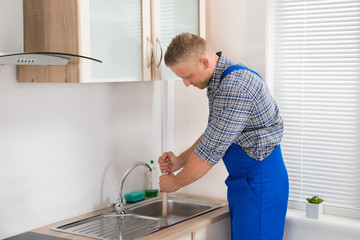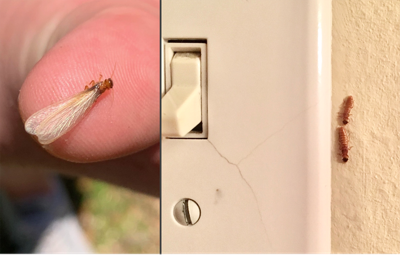Winter storms can dump snow in a matter of hours, turning your driveway into a frozen obstacle course. While hiring professional services or using high-powered equipment is an option, most homeowners want practical, budget-friendly, and efficient tricks they can apply themselves. Clearing snow doesn’t have to be backbreaking or overly time-consuming if you know the right hacks.
Below are quick and easy Driveway Snow Removal Hacks that make the process simpler, safer, and more effective.
1. Shovel Smart, Not Hard

Shoveling is often the default choice, but it’s also where most people waste the most energy. A few adjustments can make the job far easier:
- Push, Don’t Lift: Instead of scooping and tossing heavy snow, push it to the side. This reduces strain on your back and speeds things up.
- Work in Layers: For deep snowfall, skim the top layer first, then go back for the bottom. It’s lighter and less exhausting.
- Choose the Right Shovel: A lightweight plastic shovel with a curved handle reduces bending and lifting. If you need to scoop, use a smaller shovel so you’re not carrying too much weight at once.
2. Prep the Driveway Before the Snow Falls
A little preparation before a storm can save hours afterward.
- Cooking Spray on Your Shovel: A quick spray on the blade keeps snow from sticking, so every scoop slides off easily.
- Apply a Barrier Layer: Spreading a thin coat of car wax, WD-40 substitute, or even vegetable oil on metal shovels and snow blowers prevents ice buildup.
- Cover Trouble Spots: Place a tarp or large sheet over part of your driveway before it snows. When the storm ends, simply drag the cover away with most of the snow on top.
3. Use the Right Melting Agents
Chemical de-icers can help, but knowing when and how to use them makes all the difference.
- Rock Salt: Works well above 15°F, but becomes less effective in extreme cold. Scatter lightly to avoid damaging concrete and vegetation.
- Calcium Chloride Pellets: More expensive but effective in temperatures as low as -25°F. They also work faster.
- Sand or Kitty Litter: These don’t melt ice but provide traction in slippery areas. Keep a bucket handy for quick fixes.
- Homemade Solutions: Mix 1 teaspoon of dish soap, 1 tablespoon of rubbing alcohol, and ½ gallon of warm water. Pour it on icy patches to loosen buildup.
4. Break the Job Into Intervals
Instead of waiting until the storm ends, shovel or clear your driveway in stages. Removing 2–3 inches at a time is easier than tackling 12 inches in one go. Plus, compacted snow turns into ice, which is much tougher to remove later.
Set a timer or check outside every couple of hours during heavy snow. Ten minutes of light clearing several times beats an exhausting one-hour session.
5. Warm Up Before You Work
Snow removal is physical labor, and cold muscles are more prone to injury. A quick warm-up—jumping jacks, brisk walking, or light stretching—gets your blood flowing and reduces strain. Wear layers that allow movement, and keep gloves waterproof to avoid cold burns from wet snow.
6. Let Nature Work for You
Sunlight, even in winter, is one of the best natural tools for clearing snow and ice. After shoveling, spread a thin, even layer of salt or sand on your driveway and let the sun amplify the effect. A black tarp or trash bags spread over stubborn icy spots can also absorb heat and accelerate melting.
7. Create a Clear Snow Disposal Plan
Shoveling is faster when you know where the snow should go. Avoid scattering piles randomly—this creates blockages and forces you to move snow twice. Instead:
- Pile Snow Downhill: If your driveway slopes, push snow toward the lower side. Gravity helps keep it from sliding back.
- Keep Snow Away From Structures: Avoid piling near foundations or garage doors, where meltwater can seep and refreeze.
- Designate a Snow Zone: Choose one area where you consistently stack snow so the rest of your driveway remains clear.
8. Make Use of Simple Tools
You don’t need fancy equipment to speed up snow removal. A few everyday items can make the job easier:
- Leaf Blower: Works surprisingly well for dry, powdery snow.
- Broom: A wide push broom is perfect for brushing away light layers quickly.
- Snow Squeegee: Designed like a large windshield wiper, it’s great for slushy snow that’s too wet for a blower and too light for a shovel.
9. Prevent Ice From Forming
Stopping ice before it forms is easier than chipping it off later.
- Salt Brine Spray: Mix 3 cups of salt with 1 gallon of water and spray it across your driveway before a storm. This prevents snow from bonding tightly to the surface.
- Ashes or Coffee Grounds: If you have a wood stove or drink a lot of coffee, sprinkle the remains on icy patches for traction and faster melting.
- Regular Sweeping: After you’ve shoveled, sweep away the leftover snow dust. Even a thin layer can melt and refreeze into slick ice overnight.
10. Think About Long-Term Solutions
If snow removal always feels overwhelming, a few upgrades to your driveway setup can cut down on work in the long run:
- Install Snow Fences: These reduce drifting and keep snow from piling up directly on your driveway.
- Consider Permeable Pavers: They allow meltwater to drain instead of refreezing on the surface.
- Heated Mats or Driveway Heating Systems: While costly, they melt snow as it falls and eliminate most manual work.
11. Stay Safe While Clearing Snow
Efficiency is important, but safety always comes first. Keep these points in mind:
- Take Breaks: Shoveling nonstop can elevate your heart rate quickly. Rest often, especially in very cold weather.
- Lift With Your Legs, Not Your Back: Avoid twisting while holding a full shovel. Step in the direction you’re moving snow.
- Stay Visible: If you’re working near the street, wear a reflective vest or bright clothing so drivers see you.
- Hydrate: Cold weather can mask dehydration, but you’ll sweat more than you think under heavy layers.
12. Hack the Morning Commute Rush
If you wake up to unexpected snow and only have minutes to clear the driveway, focus on creating two tire tracks wide enough for your vehicle to exit. Later, when you have more time, finish clearing the full width.
For icy windshields, fill a spray bottle with a mix of 2/3 rubbing alcohol and 1/3 water. Spray it on the glass, and ice will loosen instantly—saving you from scraping.
13. Reuse and Recycle Heat
Instead of wasting energy, channel what you already have:
- Hot Water Trick (With Caution): Pour hot—but not boiling—water over icy patches, then immediately sweep away loosened snow to prevent refreezing.
- Exhaust Heat: If your car is idling, position it at the edge of the driveway so exhaust warms nearby snow, softening it for easier removal.
- Old Carpet or Rugs: Lay them down over icy areas for instant traction and insulation.
14. Involve the Household
Snow removal doesn’t have to be a solo effort. Assign small, manageable tasks to different family members—one handles shoveling, another sprinkles salt, another sweeps loose snow. Not only does this lighten the workload, but it also turns the job into a team effort that finishes faster.
15. Stay Ahead of the Weather
The best snow removal hack is timing. Keep an eye on forecasts so you know when to prep your driveway, lay down brine, or set out tarps. When you’re proactive, cleanup afterward is dramatically easier.
Final Thoughts
Driveway snow removal doesn’t need to be a dreaded winter chore. With the right combination of preparation, smart tools, natural resources, and efficient techniques, you can clear snow quickly and safely without exhausting yourself. The key is strategy—knowing when to act, how to conserve energy, and what shortcuts make the biggest impact.
This winter, instead of fighting the snowstorm, work smarter with these hacks. A few simple adjustments can turn an all-morning battle into a manageable, even routine, task.



